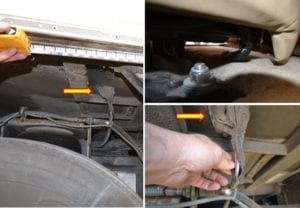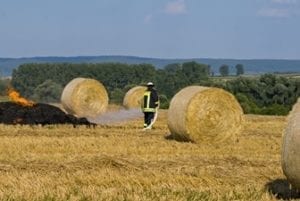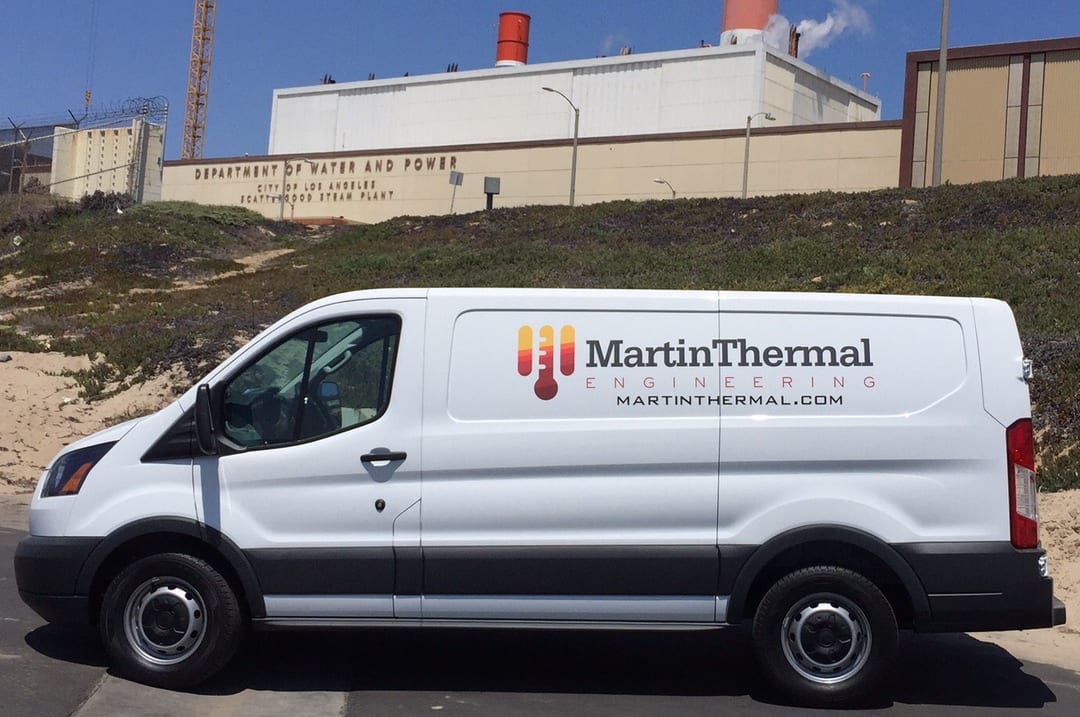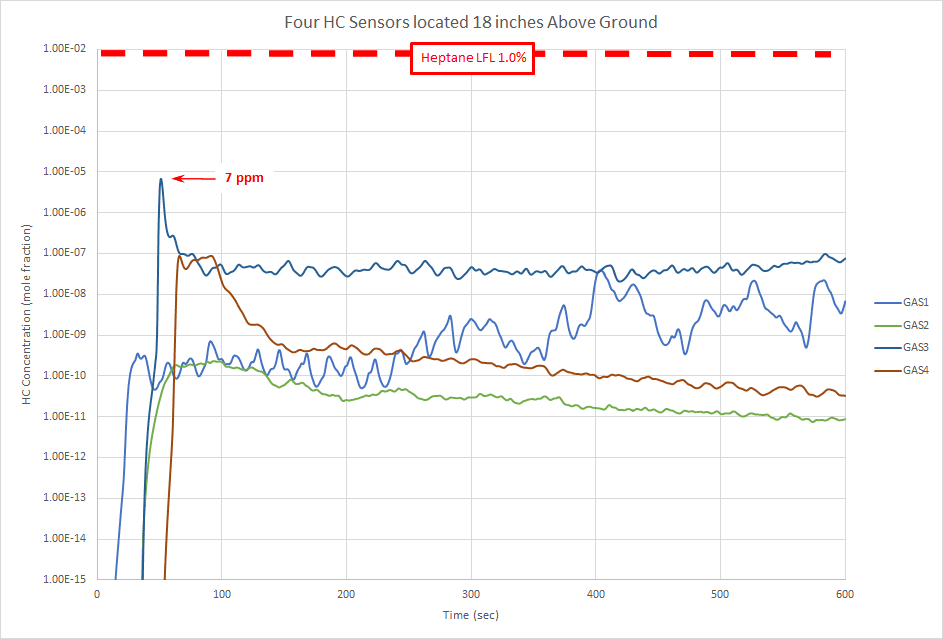As farfetched as it sounds, this author investigated a Recreational Vehicle (RV) fire where the cause was tire failure. Consider these facts:
- RV being operated on highway when right-front tire blew out.
- Driver pulled over to right side of highway.
- Witnesses photographed active fire at right-front corner of RV.
- Fire damage to RV included near-complete melting of right-front aluminum wheel hub, with zero melting of the other five aluminum hubs.
- Burn patterns on RV exterior indicated a low point of burning at right-front wheel well, and V-like patterns rising upward and spreading outward from there.
While the facts above are fully consistent with a fire origin at or near the right front wheel well, and no other origin location would be equally consistent, the evidence above fails to provide direct evidence of any fire causation mechanism. To discover the cause of the fire, our team found and inspected an exemplar RV of the same make and model and discovered an entirely new set of facts about the RV design – none of which survived the fire. Consider the inset photo below and the following additional facts:
- Several sources of combustible plastic and rubber were present inside the wheel well.
- A set of four conductors (two of which were 10 AWG solid copper wire) inside a plastic wire loom was run through the wheel well.
- The heavy-gauge wires provided power to the front passenger seat adjustment motor and were energized whenever the ignition key was in run or accessory mode.
- The wire loom and wires were a few inches above the tire’s upper surface and a few inches inward from the tire’s inward edge.
- When a rotating tire fails, elements of steel belting can partially disengage and whip around repeatedly at high speed, impacting softer materials within their reach.
Thus, after inspecting the exemplar, our team was able to supplement the burn pattern information with design information that confirmed a source of ignition (energized conductors with contemporaneously-damaged insulation) with several sources of fuel (plastic, rubber and plywood) in the area of origin. Our causation scenario was the only hypothesis under consideration that was fully consistent with all of the facts – tire failure, followed by steel-belt whipping and damaging energized conductors, followed by ignition of nearby combustible plastics, followed by fire spread to right-front corner of RV structure.
The purpose of “Investigation Anecdotes” is to inform our readers about the intriguing field of engineering investigations. We hope you are instructed by this content, and we encourage you to contact us if you seek additional information.




 A relatively common cause of vehicle fires is the unsafe installation of aftermarket electrical appliances, and this author has investigated many such incidents. While many third-party audio/video systems are installed with kits that are engineered to work flawlessly in conjunction with the vehicle’s original wiring, some are not meant for automobile installation at all. The biggest problems are (a) devices that consume too much power, (b) use of wiring that is improperly sized or inadequately safeguarded against excess current, and (c) installation of wiring in locations that are insufficiently protected and susceptible to insulation damage.
A relatively common cause of vehicle fires is the unsafe installation of aftermarket electrical appliances, and this author has investigated many such incidents. While many third-party audio/video systems are installed with kits that are engineered to work flawlessly in conjunction with the vehicle’s original wiring, some are not meant for automobile installation at all. The biggest problems are (a) devices that consume too much power, (b) use of wiring that is improperly sized or inadequately safeguarded against excess current, and (c) installation of wiring in locations that are insufficiently protected and susceptible to insulation damage. Not surprisingly, the other common feature in each of these fire incidents was inadequate overcurrent protection. In one case, there was no fuse installed anywhere in the circuit. In the second case, the fuse was installed on the wrong leg (neutral instead of hot). And in the third case, a fuse was present, but its rating was too high to protect the conductor from overheating.
Not surprisingly, the other common feature in each of these fire incidents was inadequate overcurrent protection. In one case, there was no fuse installed anywhere in the circuit. In the second case, the fuse was installed on the wrong leg (neutral instead of hot). And in the third case, a fuse was present, but its rating was too high to protect the conductor from overheating. Subsequent to the fire, but before we were retained by the adjacent tenant’s law firm, the property had been rebuilt. Consequently, it was impossible for us to perform a site inspection, but we were able to review photographs taken by the responding fire department’s arson investigator.
Subsequent to the fire, but before we were retained by the adjacent tenant’s law firm, the property had been rebuilt. Consequently, it was impossible for us to perform a site inspection, but we were able to review photographs taken by the responding fire department’s arson investigator. Photogrammetry is the art and science of determining geometric properties of objects from photographic images. The two images on this anecdote page give examples of a photogrammetric analysis conducted as part of our strip mall fire investigation. In both images, the superimposed green lines represented known dimensions and the superimposed red lines represented unknown dimensions. By computing the relative lengths of the red and green lines, a multiplier was obtained and the unknown dimensions were determined from the known dimensions.
Photogrammetry is the art and science of determining geometric properties of objects from photographic images. The two images on this anecdote page give examples of a photogrammetric analysis conducted as part of our strip mall fire investigation. In both images, the superimposed green lines represented known dimensions and the superimposed red lines represented unknown dimensions. By computing the relative lengths of the red and green lines, a multiplier was obtained and the unknown dimensions were determined from the known dimensions. Portable cookstoves are used by caterers and campers to bring the convenience of a “kitchen appliance” to places where such appliances are normally not available. Some cookstoves are fueled with liquefied propane that is supplied in 1-lb canisters (first photo) or 20-lb containers (second photo). Others utilize liquefied butane that is supplied in aerosol-like cans (third photo). While all these systems are equipped with unique safeguards, certain types have failed catastrophically, injuring workers and guests.
Portable cookstoves are used by caterers and campers to bring the convenience of a “kitchen appliance” to places where such appliances are normally not available. Some cookstoves are fueled with liquefied propane that is supplied in 1-lb canisters (first photo) or 20-lb containers (second photo). Others utilize liquefied butane that is supplied in aerosol-like cans (third photo). While all these systems are equipped with unique safeguards, certain types have failed catastrophically, injuring workers and guests. Cookstove Safeguards. Butane cookstoves (example in fourth photo) are generally equipped with a multi-function gas safety valve. When the fuel can is installed, a lever must be pressed to latch the can into place so that the gas will begin flowing through the valve to the burner. The valve also has a pressure-safety pin that is designed to trip the latch and disengage the can when the fuel pressure exceeds a safety threshold. However, in some models, the retracting mechanism has been observed to fail intermittently and the can fails to disengage even though the pressure-safety pin performed as it should.
Cookstove Safeguards. Butane cookstoves (example in fourth photo) are generally equipped with a multi-function gas safety valve. When the fuel can is installed, a lever must be pressed to latch the can into place so that the gas will begin flowing through the valve to the burner. The valve also has a pressure-safety pin that is designed to trip the latch and disengage the can when the fuel pressure exceeds a safety threshold. However, in some models, the retracting mechanism has been observed to fail intermittently and the can fails to disengage even though the pressure-safety pin performed as it should. Can Safeguards. Small butane fuel cans are also equipped with certain safety features that are designed to prevent or mitigate catastrophic releases of flammable gas. Because the fuel cans are installed horizontally into the cook-stove chassis, the fuel withdrawal tube is equipped with a right-angle extension to ensure that butane vapor is withdrawn from the headspace, rather than butane liquid from the lower portion of the can. The neck of the can contains a feature that is intended to prevent improper rotation in the stove, but users can unknowingly defeat this safeguard and install the can in the wrong orientation, permitting butane liquid to be withdrawn instead of butane vapor, which is undesirable.
Can Safeguards. Small butane fuel cans are also equipped with certain safety features that are designed to prevent or mitigate catastrophic releases of flammable gas. Because the fuel cans are installed horizontally into the cook-stove chassis, the fuel withdrawal tube is equipped with a right-angle extension to ensure that butane vapor is withdrawn from the headspace, rather than butane liquid from the lower portion of the can. The neck of the can contains a feature that is intended to prevent improper rotation in the stove, but users can unknowingly defeat this safeguard and install the can in the wrong orientation, permitting butane liquid to be withdrawn instead of butane vapor, which is undesirable. This author has investigated several flash fires involving portable cookstoves and has identified product defects as well as certain ways the products can be misused. In the worst-case scenario, the fuel canister overheats and ruptures, releasing a fireball that causes personal injury and property damage.
This author has investigated several flash fires involving portable cookstoves and has identified product defects as well as certain ways the products can be misused. In the worst-case scenario, the fuel canister overheats and ruptures, releasing a fireball that causes personal injury and property damage.